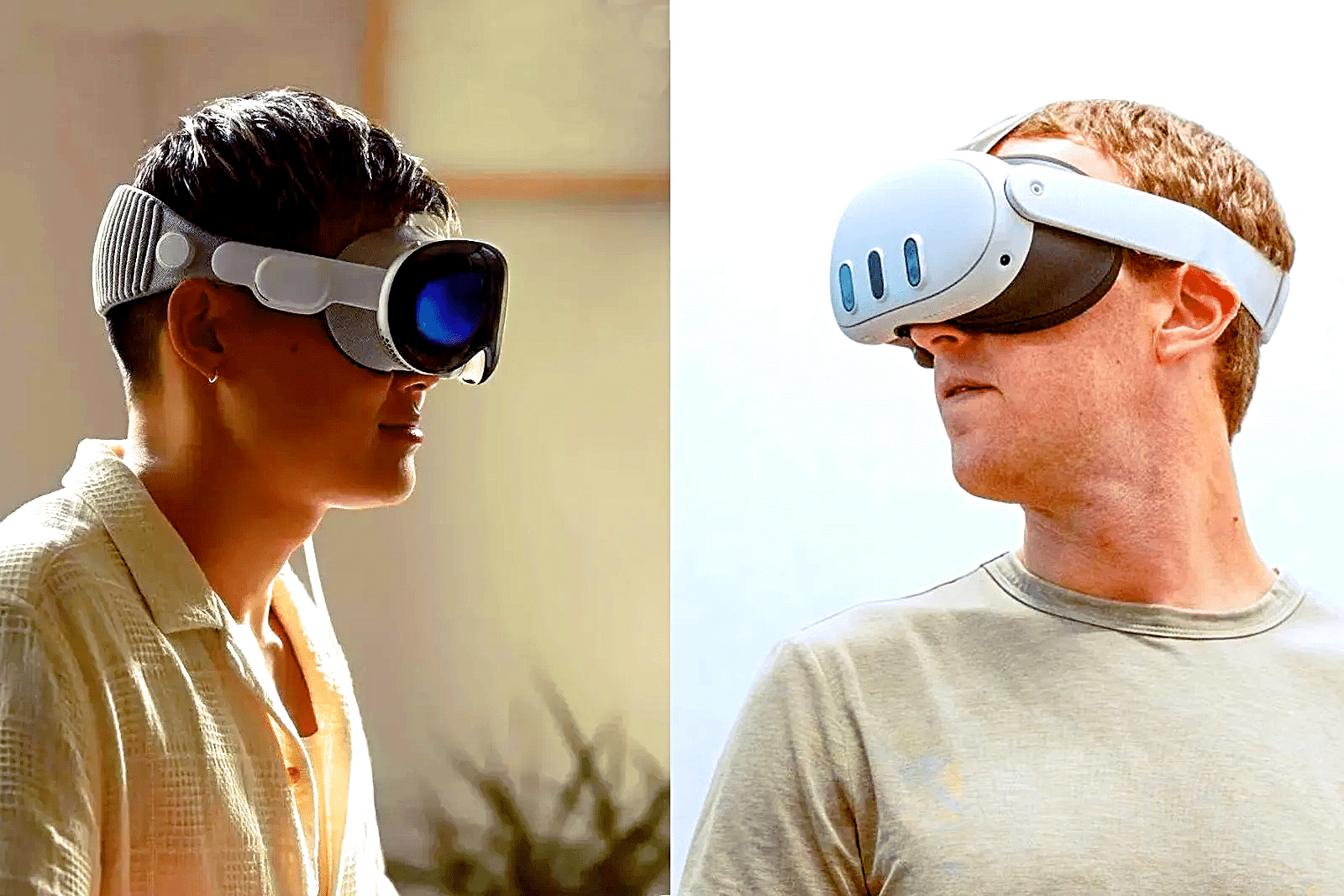Meta and Reality Labs showed off their new VR goggles to us in London. After initial doubts, we found that some products are more than the sum of their parts.
When the developers of Meta Quest 3 told me their latest headset was designed with a focus on mixed reality – that is, for applications that blend the real environment with game graphics – I assumed it was a missed opportunity. For the Metaverse, something like this might serve, but what about the previous main target group, gamers? No compute time-saving measures for VR game graphics? No eye tracking for focused image sharpness? How in the world is Quest 3 supposed to stand up to competitors like PSVR 2 and Pico 4?
In this regard, Quest 3 does indeed have a lot to offer, but the insight was not available from raw data.
Table of Contents
On paper, a timid iteration
Certainly not lacking in improvements over the aging Quest 2 They just sound conservative on paper.
- Color pass-through mode using high-resolution 3D cameras and a depth sensor.
- Modern pancake lenses for undistorted imaging
- Screen resolution increased by 30 percent with expanded field of view
- Free adjustable eye relief
- More compact form factor
- A new system chip (Snapdragon XR2 Gen2) that doubles the processing power compared to Quest 2 and thus generates nicer graphics
- 8 GB of RAM – i.e. 33 percent more than the predecessor model
- Less bulky hand controllers that now do without a tracking ring
These are undoubtedly advances with countable value, but much of it has long since been tapped by the competition. I had expected more innovation. And so I wondered if the focus on Mixed Reality would be enough to inject fresh impetus into the chilled VR scene. After all, the fun also costs more than Ottonormal consumers have been willing to spend so far.
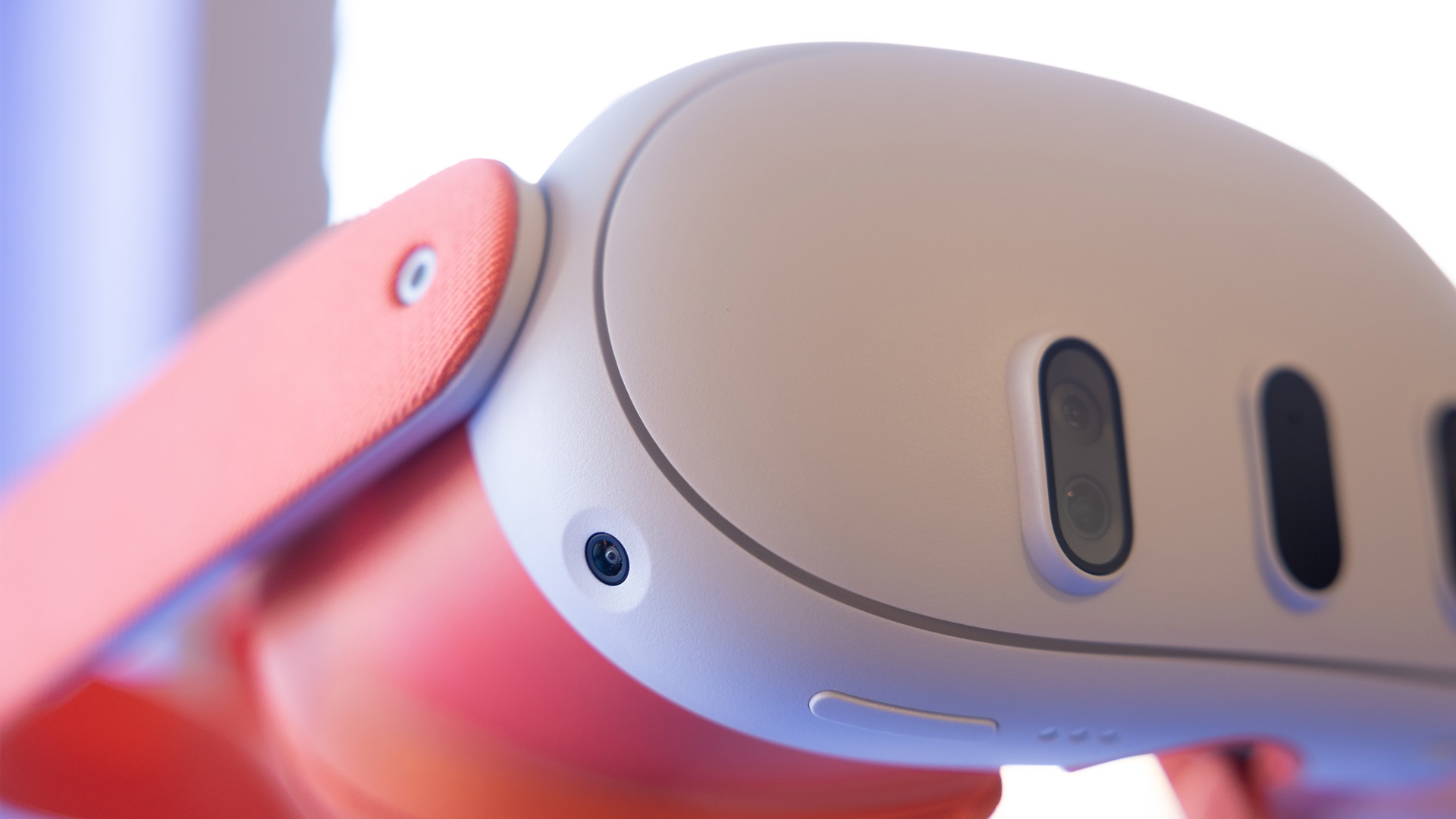
At a price of 549 euros in the “small” version with 128 GB internal memory I saw little potential for big headlines. After all, competitors like Pico 4 lie like lead on retailers’ shelves even for just under 400 Euros
Lifelike through-view
This is how you can get it wrong. When I had a hand in it myself, the penny dropped: Many small improvements add up to a big leap in Quest 3 that benefits gamers as well as metaverse applications. Why? Because they go hand in hand in practice.
See the form factor issue. The first impression when looking through the new pancake lenses was surprisingly good, because the shrunken dimensions not only make the headset more manageable. They also bring the eyes closer to the screen. No more trace of the usual diving mask view of other headsets.
As long as you don’t wear glasses that require more distance from the lenses, you can take full advantage of the 110-degree wide horizontal field of view. Meanwhile, eyeglass wearers have the option to permanently swap out the installed pancake lenses for variants with matching diopter values.
The increased resolution and color pass-through mode left me amazed, as I saw my surroundings almost exactly as I perceived them with my own eyes: crisp and without any annoying screen door effect due to coarse pixel structures.
The room I was standing in seemed lifelike thanks to the high-resolution cameras, and so vividly three-dimensional that I could effortlessly bend my knees to touch a low table – without the usual threat of losing balance due to distorted depth perception. Even if certain hues seemed a tad too dark, I was sure after a few seconds that of all the pass-through modes I’ve tried in quite a few VR headsets, this was the best.
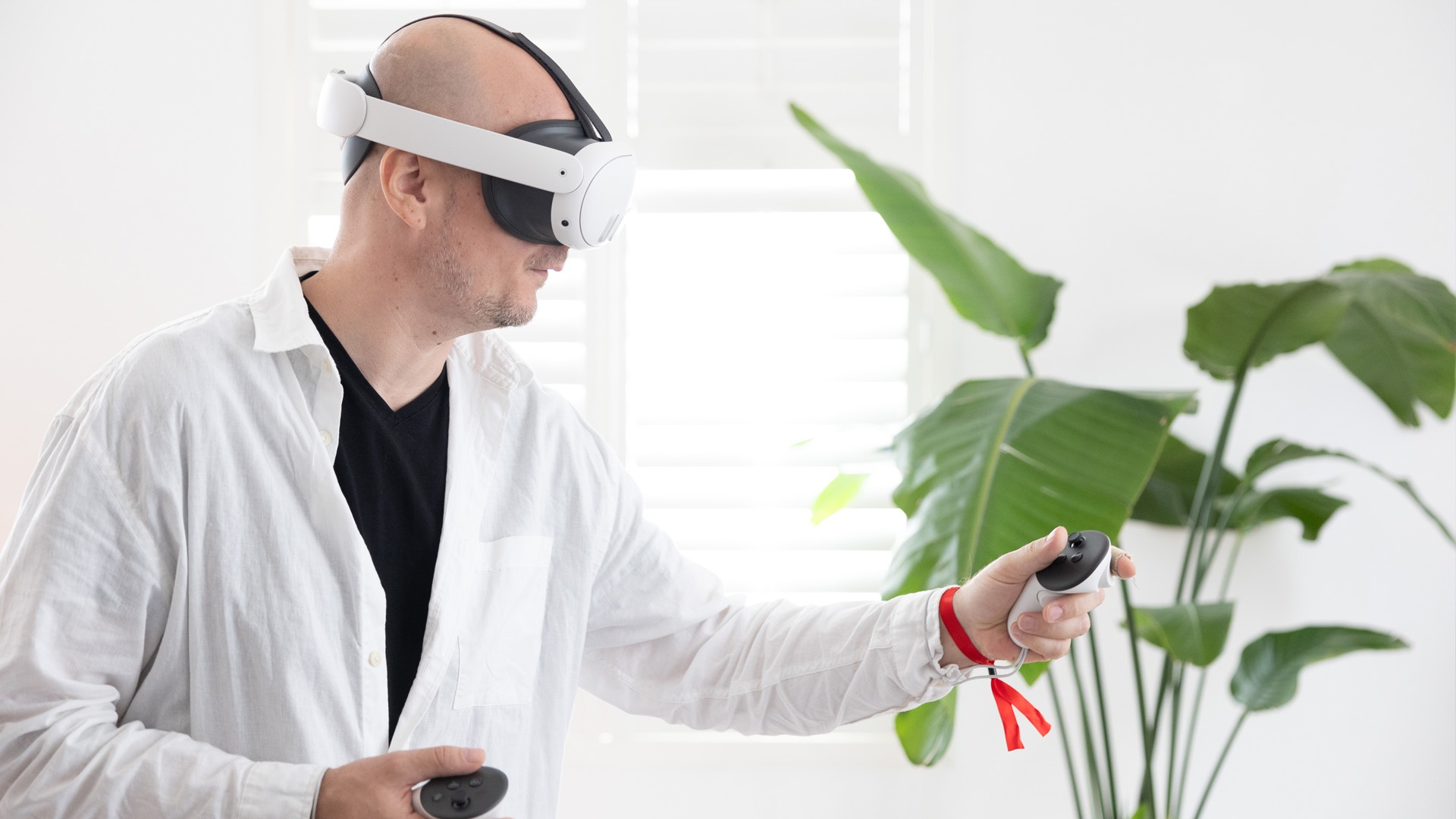
Single downer: Similar to the HTC Vive XR Elite headset, Quest 3 still struggles with small distortions when people or other moving objects dart through the frame. This so-called warping is restrained compared to other headsets and can possibly be reduced further with software advancements.
Surveying space made easy
The improved pass-through has more than just subjective advantages. For example, it is no longer necessary to manually delimit the home playing area via controller. Quest 3 independently analyzes the surroundings on demand by building a virtual 3D grid while you look around the room. This worked almost perfectly when we tried it out. Only in the case of height differences of misshapen objects such as plants did the automatic game field delimitation overshoot the mark slightly.
This may sound like a luxury feature at first, but it is essential for the Metaverse. If we are to actually pick out furniture virtually at some point and place it in our home for a trial before buying, the capture of the space must be perfect. Apparently, Meta Quest 3 brings this vision within reach.
Realities blend believably
Two games showed me how well the new headset implements such mixed reality ideas. The first was called First Encounters, the second simply BAM.
First Encounters had me shooting holes in the walls of the real environment with a virtual laser gun. The more I removed from the walls, the more of a glaring surface of an alien planet appeared. Little aliens that bore a resemblance to the famous tribble fur balls from Star Trek then poured out of the holes. They scurried around the room trying to get into a spaceship. I was supposed to stop that with the firepower of my laser guns.
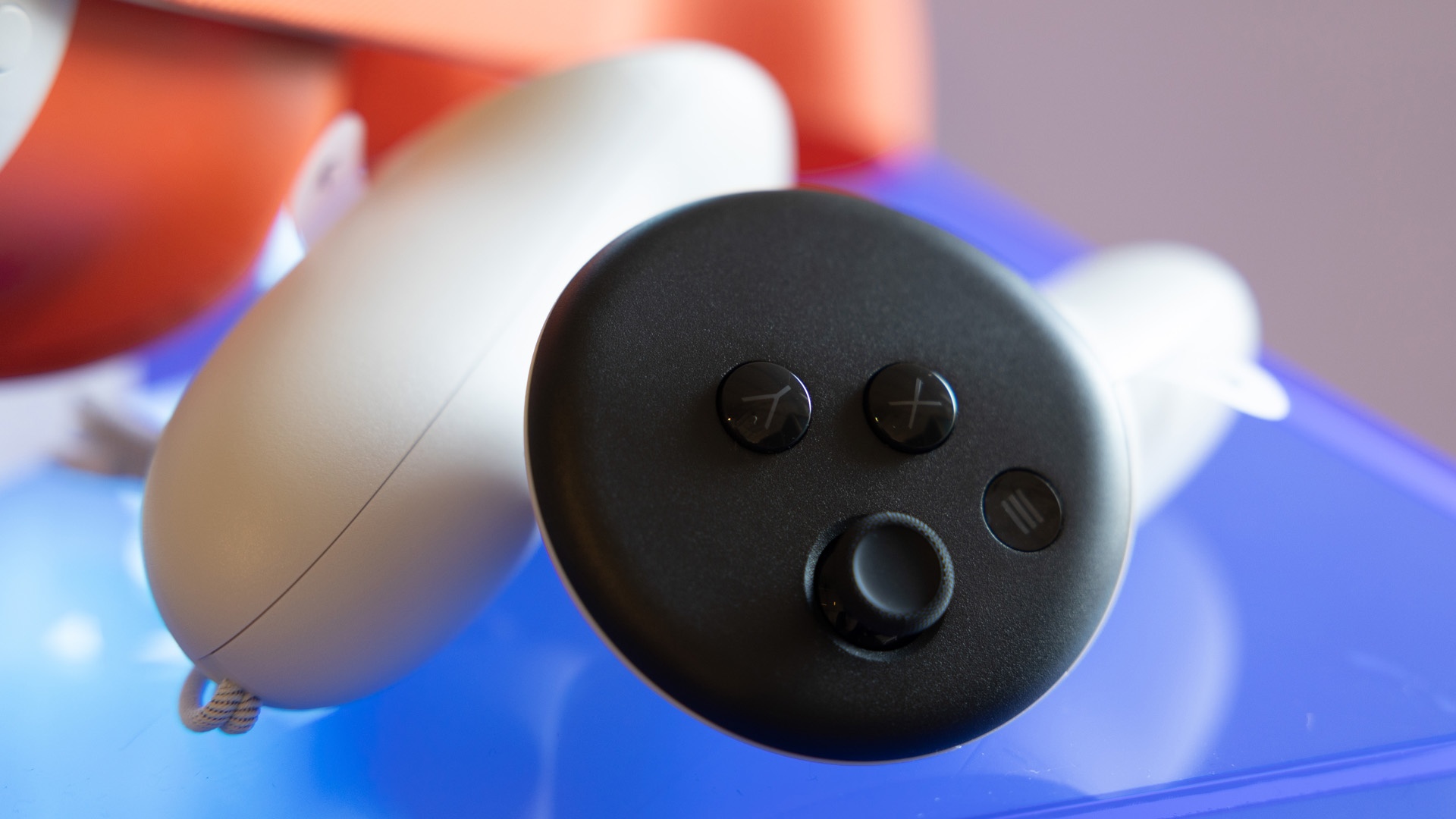
Bottom line was just about a nice shooter game with mayhem factor, and yet the presentation impressed with a seamless transition between the real environment and the game graphics
Naturally, I could see exactly what was real and what wasn’t; after all, the game portions consisted of simple pastel elements throughout. However, given the sharpness of the rendering and the bombproof anchoring of all the graphics portions in space, I was willing to go along with the illusion – much like I temporarily accept a prop as a real object in a theater play.
The same was true with BAM. In this multiplayer delight, in which four participants gather online or locally around a virtual gaming table, each player controls a small robot and tries to wear a crown with it for as long as possible before it is snatched away. Sounds simple, but it was a lot of fun. And visually an eye-catcher, because the playing field was so firmly and plastically anchored in space, as if it were real.
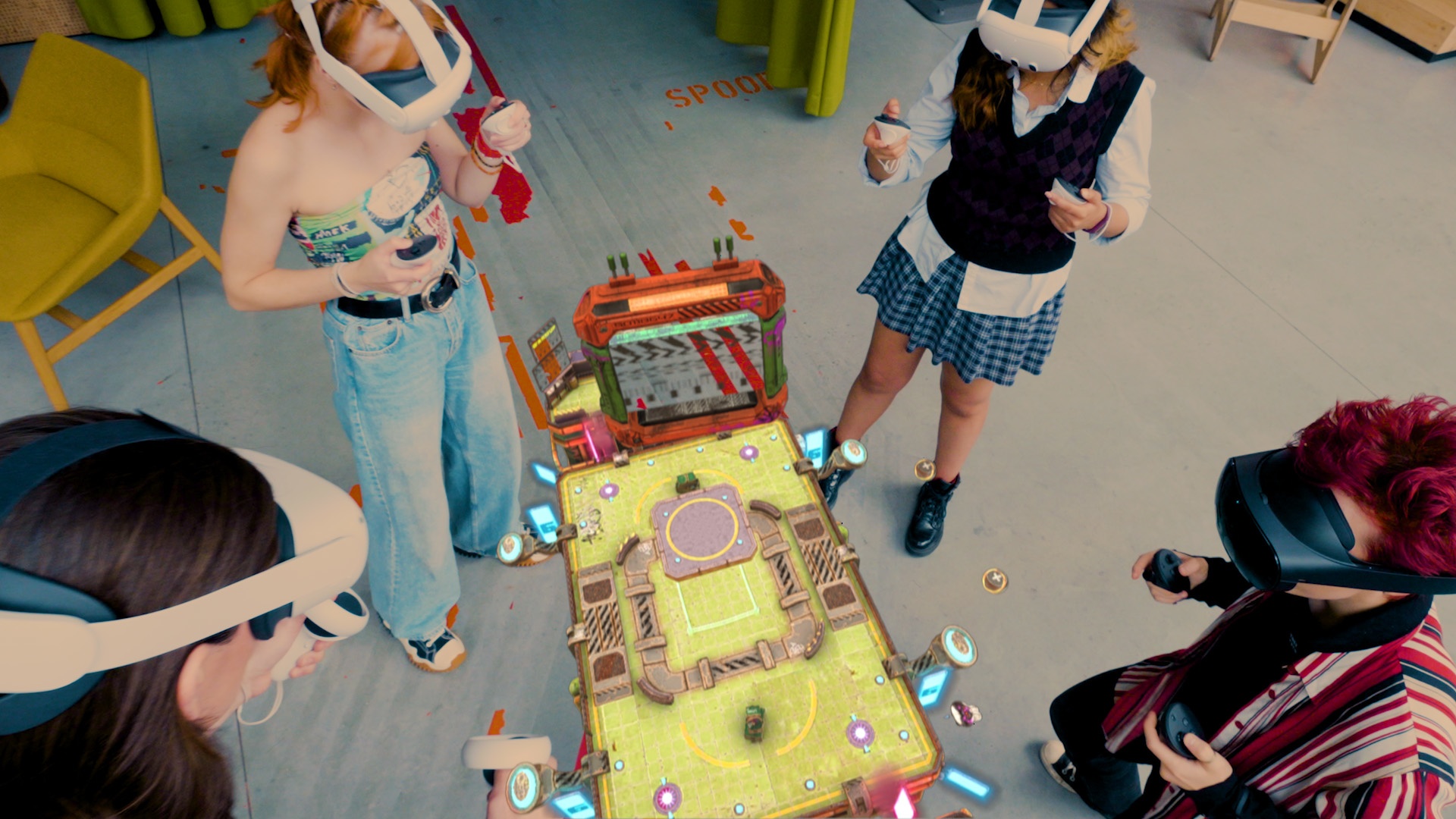
Also really good at VR games
This shouldn’t be the last time that image sharpness and convincing 3D view would tip the scales. A special demo of the VR game Red Matter 2, designed especially for Quest 3, not only showed distant planets and deceptively real-looking spacesuits, whose image sharpness alone significantly increased immersion, but also offered a comparison mode in which you could examine how much blurrier and coarser the game would look on Quest 2 at the touch of a button.
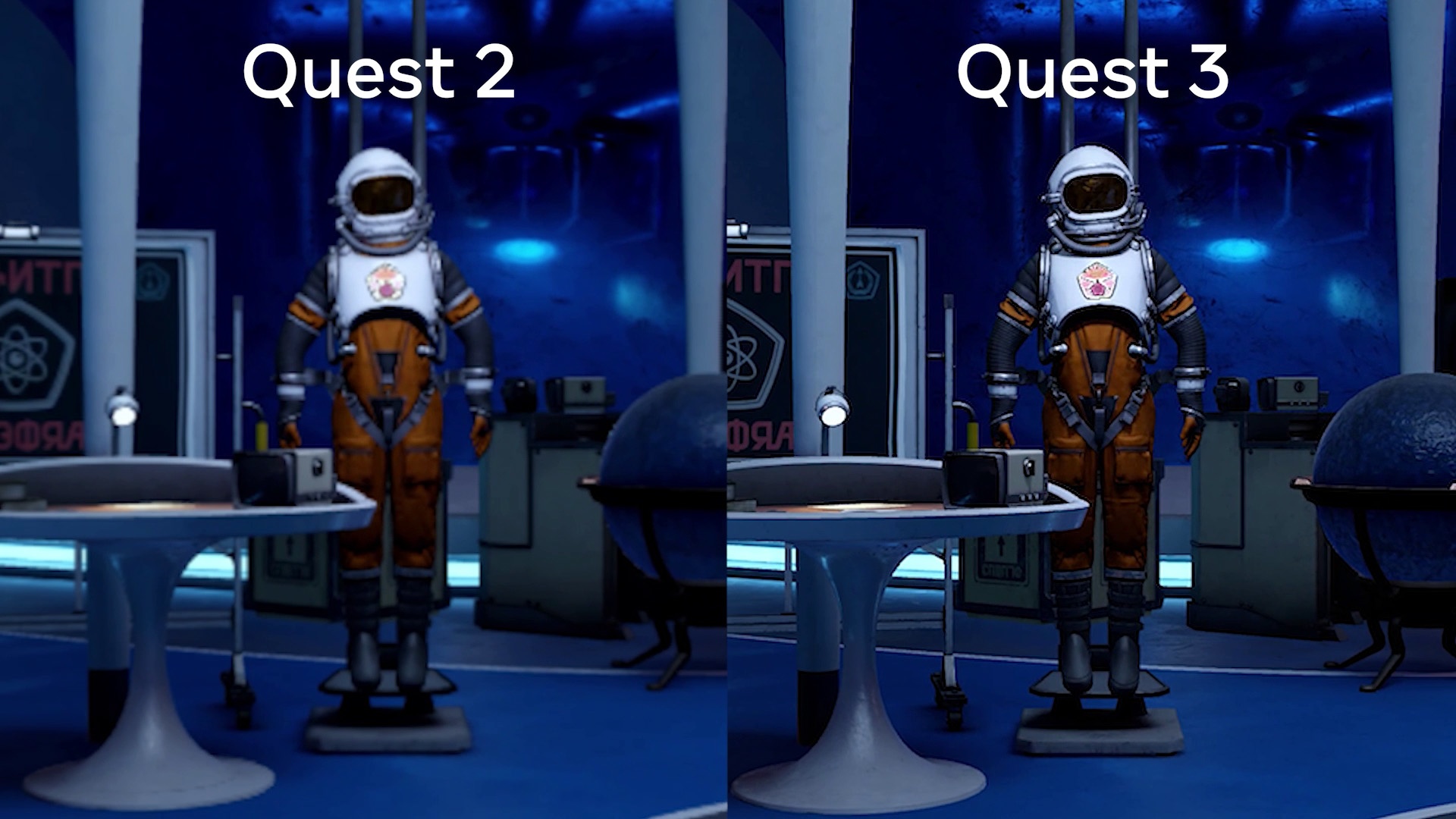
I could go on at length at this point about how well the new controllers felt in the hand, and how they never bumped against each other due to annoying tracking brackets when swinging virtual maracas in Segas Samba de Amigo
Or how I floundered despite my sprawling VR experience while exploring Venice in Assassin’s Creed: Nexus. My brain took in the height of the virtual buildings as I climbed. I haven’t had anything like that happen to me since 2015. Not even Horizon: Call of the Mountain on PSVR2 could fool me like that.
But instead of making big speeches, I’ll keep it short with a small conclusion: Image sharpness, depth perception and last but not least the increased comfort of Quest 3 lift immersion in VR games to a new level.
Old weaknesses of a new package
With all the enthusiasm for the improved technical aspects, I still don’t want to sweep under the carpet that some things sour me. There is the issue of battery life, for example. Once again, only two to three hours of capacity are planned. That might be understandable in view of the new graphics chip and the better screen, but the short runtime is particularly annoying for a PC-VR connection (which is possible wirelessly or via USB-C cable as before).
Also: Why are accessories for Quest 2 not further usable? Especially third-party headbands and halo brackets. Would it have been that hard to keep the design backwards compatible? On the software front, the developers couldn’t stress enough that old games would look better on Quest 3. When it came to hardware, they didn’t care as much.
Editor’s Verdict
Compared to Sony’s technically extravagant PSVR2, Meta is much more conservative. Even the screen’s resolution of 2064×2208 pixels per eye is only marginally higher than that of PSVR2.
And yet, I think Meta Quest 3 is more adept at implementing its advances, which seem tentative on paper. The overall experience is impressive because the new VR goggles are more comfortable to use, their immersion factor is above average, and last but not least, Mixed Reality is finally reaching a level I can take seriously.
Whether Meta and Reality Labs will reach the mass market is nevertheless not foreseeable, especially since there are still some factors that we could not check in the press presentation. For example, the quality of the highly touted backwards compatibility or possible improvements in the connection to PCs. How well does the automatic room measurement work when clothes and other utensils are criss-crossed on the floor? These are details that would have to be researched in extensive tests.
Either way, VR is still a difficult field and 549 Euros for the entry-level version is still a lot of money. In the end, it’s up to the software. The games we were shown were all very fun and graphically impressive. And yet, much more is needed. More good games, more useful apps, more everyday usability. At least the conditions for this have become considerably better with Quest 3.

